Effect of Atmospheric Stability on the Dispersion of Radioactive Materials
Effect of Atmospheric Stability on the Dispersion of Radioactive Materials
HUNG Fan-yiu
March 2020
It was mentioned in the article "Nuclear Accident Consequence Assessment" that weather information including wind direction, wind speed, atmospheric stability and precipitation is required to assess the dispersion of radioactive materials in a nuclear accident. The effects of wind direction and wind speed are relatively intuitive and easy to understand. Wind direction affects the direction of transportation and dispersion of radioactive materials, while wind speed affects the time for radioactive materials to reach a certain region. In this article, we will focus on the effect of atmospheric stability on the dispersion of radioactive materials.
When the radioactive materials associated with a nuclear accident are exposed to the air, some radioactive gases or particles will be carried downstream by the wind. The radioactive materials cannot be seen or smelt, but would behave in a way similar to a cloud of smoke dispersing into the air (known as "plume"), and depositing some of the particles on the ground. The extent and rate of dispersion of the plume in the air is related to atmospheric turbulence, which in turn depends on the stability of the atmosphere. When the atmosphere is unstable, turbulence is enhanced. If the atmosphere is stable, turbulence will be suppressed.
To classify atmospheric stability, the most widely used scheme is originated by Pasquill (1961) and modified by Turner (1967): the Pasquill-Turner (PT) scheme. This scheme categorises stability in terms of surface wind speeds, daytime insolation and nighttime cloudiness. Stability classes are denoted as A to G. Class A represents the most unstable condition, class D the neutral condition and class G the most stable one.
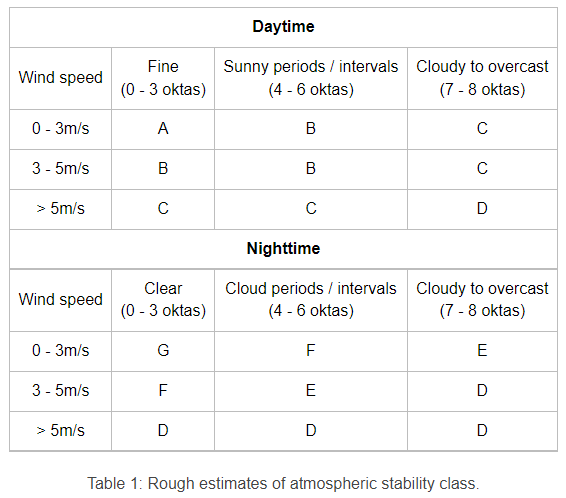
The atmospheric stability can also be defined by vertical temperature change in the atmosphere[1].
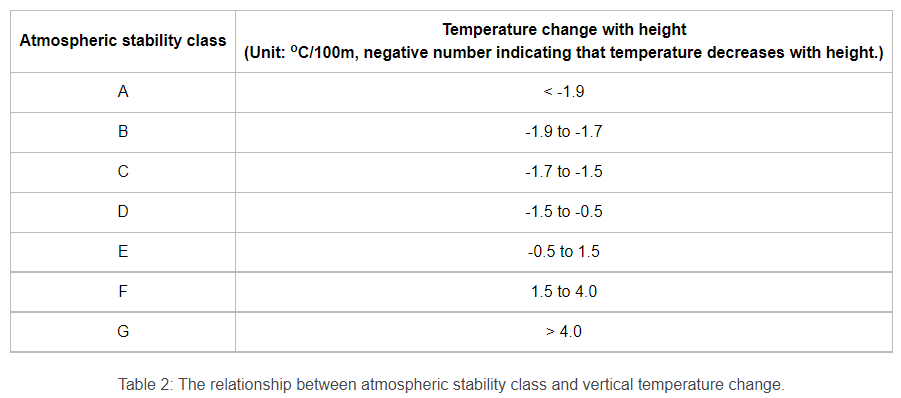
Atmospheric stability affects the dispersion of plume. Figures 1 and 2 show the spread of plume in the stability class B (less stable) and E (more stable) conditions respectively under the same wind direction and wind speed. It can be seen that the spread of plume will be larger in a more unstable atmosphere. Table 3 shows the atmospheric stability and rough estimate of the corresponding angular spread of the plume (only classes A to F).
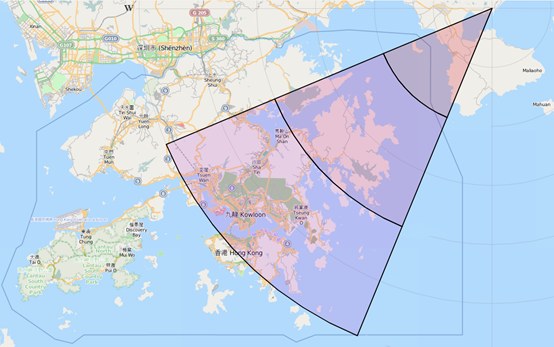
Figure 1. The spread of plume in the stability class B condition.
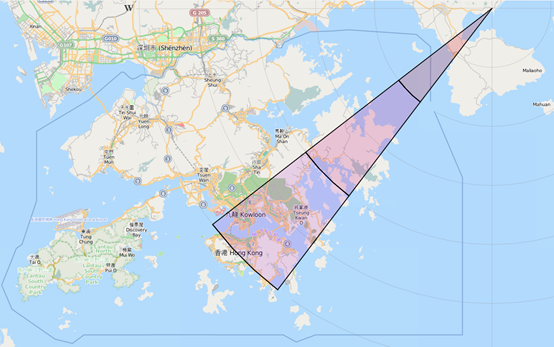
Figure 2. The spread of plume in the stability class E condition.
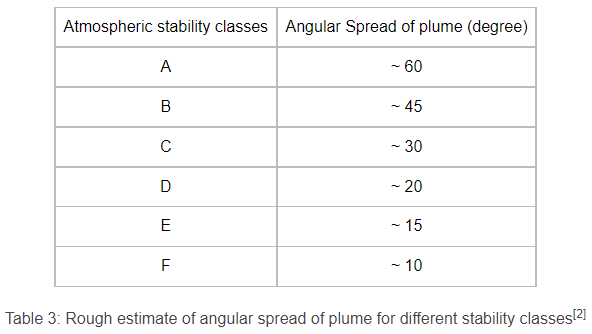
References:
[1] John L. Woodward, Estimating the Flammable Mass of a Vapor Cloud, American Institute of Chemical Engineers, 1998.
[2] John E. Till and Helen Grogan, Radiological Risk Assessment and Environmental Analysis, Oxford University Press, 2008.
[1] John L. Woodward, Estimating the Flammable Mass of a Vapor Cloud, American Institute of Chemical Engineers, 1998.
[2] John E. Till and Helen Grogan, Radiological Risk Assessment and Environmental Analysis, Oxford University Press, 2008.